Serious Games
Serious games, or digital game-based learning (DGBL) as it is also called, is distinct from gamification which simply means using game mechanics to motivate people to continue behaviors like motivating sales force to perform through badges/point systems or posting photos on Facebook. Serious games should have skill improvement and training as their primary purpose and should not just be message broadcasters or only aim at knowledge acquisition. Laamarti et al. (2014) define a serious game as an application with three components: experience, entertainment, and multimedia. In a review of literature, the authors found that most definitions of serious games include an entertainment dimension, enhance the user’s experience through multimodal interaction in different contexts like education, health, or interpersonal communication, contain different media such as texts, graphics, animation, haptics, and the ‘serious’ in the term refers to some input like a skill or knowledge. Loh et al. (2015) identify the characteristics of serious games as clear goals, repeatable tasks (to build mastery), monitoring of learners’ progress, encouraging increased time on task (through motivation), and adjusting the learning difficulty level to match learners’ level of mastery (or personalization).
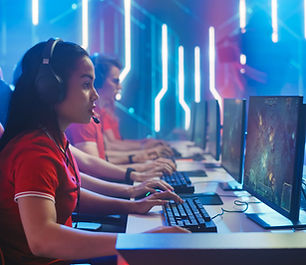
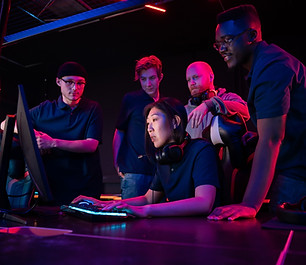
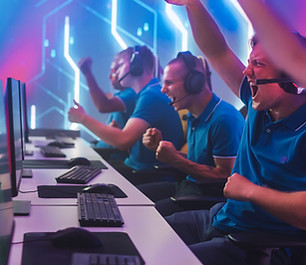
History
The first digital game was released in 1972 and Odyssey by Magnavox, the first home video game console launched in the same year, emphasized the use of games in education. The Oregon Trail debuted in some schools in Minnesota in 1971 and Lemonade Stand, a business management focused game launched in 1973, were both produced by Minnesota Educational Computing Consortium (Laamarti et al., 2014; Loh et al., 2015). The term serious games came into play many years later and there are different accounts about the origin of the term. In 1981, Bradley Trainer, a simulation tool developed by the U.S. army was used to train new recruits (Laamarti et al., 2014). Several arcade games, like Pole Position, were launched thereafter. The advent of authoring software in the late 1980s made it possible for educators to create their own games. The 1990s saw the release of many edutainment games, a marriage between education and entertainment. The term digital game-based learning (DGBL) was popularized in the turn of the century and the year 2002 saw the release of America’s Army, a successful ‘war game’ commissioned by the U.S army as a recruitment tool. This was the start of the wave of serious games as various organizations and initiatives provided the impetus for the development of what has become a rapidly growing industry (Loh et al., 2015). Zawacki-Richter and Latchem (2018) have used the content analysis software program Leximancer to identify the frequent terms in all research articles from 1976 to 2016 in the leading journal Computers & Education. The authors identified four phases reflecting major developments in educational technology: the advancement and growth of computer-based instruction (1976–1986); stand-alone multimedia learning (1987–1996); networked computers as tools for collaborative learning (1997–2006); and online learning in a digital age (2007–2016).
Classification


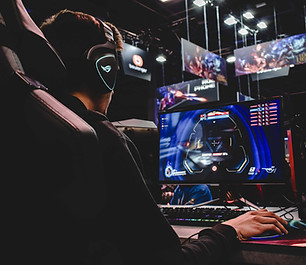
In a systematic literature review on the impact of serious games (or digital games for learning), Boyle et al. (2016) analyzed the variables of serious games as the following: - the primary purpose of the game (entertainment or learning), - game genre (simulation, simulation games, role-playing games, drill and practice games, MMORPGs or massively multiplayer online games, strategy games, puzzles, and adventure games), - subject area (STEM and health were the most popular categories), - game outcomes (specific or generic) and - platform (video console, laptop/PC, mobile). Another criterion is suggested by Laamarti et al. (2014), who classify serious games based on activity, modality, interaction style, environment, and application area.
Examples
Ravyse et al. (2016) examined 63 articles from 2000 to 2015 to identify the success factors of serious games. These articles include games in various areas of learning like cultural studies (e.g., imparting knowledge about medieval Amsterdam), vocational education (e.g., the design process of surface treatment), health-related (e.g., promoting healthy behavior among obese people), teacher training (e.g., training about laboratory safety), secondary school education (e.g., relationships and sex education), elementary school education (e.g., awareness about negative consequences of taking methamphetamine), and passenger education (e.g., how to survive aircraft emergencies). Specific examples of the purpose of games in university education, as discussed by Laamarti et al. (2014) and Ravyse et al. (2016), are provided below: - Imparting knowledge about the internal working of a computer to first-year (sport science) university students - Help college students learn how electrical circuits work - Determine the usefulness of content creation in a game environment for university students - Enhance the computer graphics course taught to 1st year vocational studies students - Teach the basics of the database programming language Structured Query Language (SQL) to UG students - Game used by computer science teachers to teach computer programming skill to university teachers - Training to surgery residents for total knee replacement procedure - Simulation and management game to sensibilize players to hardships of maintaining a farm in developing countries
Outcomes
Ravyse et al. (2016) reveal that the most common desired outcome of serious games is knowledge transfer, followed by soft skill acquisition and behavioral change. Similarly, Boyle et al. (2016) suggest that serious games with higher quality designs favor knowledge acquisition and perceptual, cognitive, and physiological learning outcomes, while social and behavioral outcomes were favored by ‘softer’ disciplines like business and social science. On the other hand, Geissen (2015) suggests that it is still unclear whether serious games help in enhancing learning and that the success of a game depends very much on the context and the pedagogical competence of the teachers, although the author posits that success in learning is higher for language learning compared to other topics. Negative outcomes associated with playing serious games include the effects of increased competition and task evaluation difficulties (Hamari et al., 2014). The factors which lead to successful learning in serious games were analyzed by Ravyse et al. (2016), who suggest five central serious game themes: backstory and production, realism, artificial intelligence and adaptivity, interaction, and feedback and debriefing, which should be combined with pedagogical content to ensure successful learning. The authors emphasize that maintaining the situational interest to promote the players sensation of flow (immersion) is also important. This is achieved by making the game tasks gradually more difficult, in keeping with the constructivist learning theory. Features like immediate in-game feedback and intuitive game interface prevent flow interference. AI can help by establishing emotional connections through personalized responses. Other success factors include avoiding negative consequences due to players' low performance, incorporating music, providing in-game guidance, and designing multi-player collaborative exercise games (vs. single-player) (Laamarti et al., 2014). In choosing between which element should be predominant, the fun element or the learning element, many authors conclude that the ludative element is prime (Giessen, 2015; Laamarti et al., 2014; Ravyse et al., 2016). Geissen (2015) states that learning with positive emotions activates the hippocampus while stress and boredom activate the amygdala hence ludative methods should be used to teach and learn. Ravyse et al. (2016) conclude from their review that players want to have fun before they appreciate the learning value of serious games. Serious games producers need to take advantage of this fact to engage the players so that the games have replay value. The authors reiterate that enjoyable games are played by choice, not just when the curriculum demands it, and that this is the true measure of a successful serious game (Ravyse et al., 2016).
Simulation Games


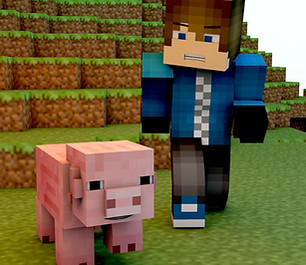
Gamification is an umbrella term which includes different categories of gamification-based applications for learning. Simulation games are a type of gamification in educational online games. Often simulation games, created as forms of rehearsal of professional skills in settings where errors can be made to master a skill or knowledge, are considered a category of serious games (Chandross & DeCourcy, 2018). Simulation games are games which create an imitation of reality. They often incorporate a 3D experience and can be done through VR technology. The most common example is the simulation of an airplane for a trainee pilot. Some of them are distinct from serious games, though they share many benefits of serious games, like they can help students to learn a skill and provide a safe environment to conduct learning experiments. The disadvantages are that they can be expensive and may require a fixed location. Specific varieties of simulation games maybe chosen over serious games when the activity and environment need to be accurately mimicked (Laning, n.d.). Simulation games have been used to teach marketing, design, sourcing, and retailing concepts. The following sections include examples of simulation games (most of them are free of charge) for retail, design, sourcing and marketing, applicable to and created for development of fashion/apparel education and skills.
Retail Simulation Games
Retail simulation games can be used to train students on specific skills like pricing, store design, developing the marketing mix, and marketing planning. The following hyperlinks are for retail simulation games which can be accessed free of charge and are a good source for retail course instructors.
Design Simulation Games
Design simulation games are geared towards developing students’ creativity and serve as an introduction to fashion design. The actual design techniques and skills are the focus of courses that aim to teach the practical application of design software. The simulation games listed here help in boosting creative skills in individuals who are serious about fashion design as a career. The list below includes mobile device-based simulation games that can be found on Android (Google Play Store) or Apple (App Store). - It Girl - Fashion Star - Fashion Designer New York - LA Fashion Show - Talented Fashion Designer - Design Studio - Catwalk Countdown - Lady Popular - World Class Fashion Designer - Design Studio - Covert Fashion - Love Nikki-Dress Up Queen - Stardoll Stylista - Queen's Wardrobe - Kim Kardashian Hollywood - Star Girl - Fashion Star Boutique - Fashion Story - Fabulous-Angela's Fashion Fever - NYC Fashion Dress-Up Challenge - Fashion Challenge Milan
Sourcing Simulation Games
One of the more popular supply chain simulation games that are free to use is the Mexico-China Sourcing Game (Allon & Van Mieghem, 2010). In this game, students are divided into several teams where they will make sourcing decision on a quick turnaround but expensive source (Mexico) or a cheap but remote and hence slow turnaround source (China). Students learn the concepts of strategic sourcing, inventory management, and total landed cost in an experiential way through this game. Another source of supply chain games is provided by the non-profit website jointly run by R. H. Smith School of Business, University of Maryland and the Delft University of Technology. The website’s Distributor Games are suitable for retail and fashion merchandising majors. A detailed game introduction, game flow, and player application is given. Three supply chain scenarios are included for student learning: Local vs Global, Demand Surge, and Extreme Supply Chain Administration.
Conclusion
The serious games genre has evolved with successive reviews suggesting an updated taxonomy, new kinds of classifications, and revised success factors. The question now is not whether serious games should be integrated in the learning environment, but how doing so can best be done to maximize learning. Each game needs to successfully integrate learning and fun, and factors like logical fit within a class, a well-structured and cooperative gaming scenario, internal support, and a multimodal presentation of gaming content are important for success (Geissen, 2015). Simulation games, some of which are distinct from serious games in terms of mimicking reality, share many similarities with serious games and for this reason, they are often considered to be serious games. They share the common goal of helping students to acquire skills while also being entertaining to the players. Serious games are a relatively new phenomena and are still in the development stage for higher education. Most examples of serious games in university education are in the healthcare, management, as well as vocational and STEM fields. In fashion education, simulation games accessed through mobile apps and through platforms like STEAM are the more prevalent form of gamification.
References
Allon, & Van Mieghem. (2010). The Mexico-China sourcing game: Teaching global dual sourcing. INFORMS Transactions on Education, 10(3), 105–112.
Boyle, E. A., Hainey, T., Connolly, T. M., Gray, G., Earp, J., Ott, M., Lim, T., Ninaus, M., Ribeiro, C., & Pereira, J. (2016). An update to the systematic literature review of empirical evidence of the impacts and outcomes of computer games and serious games. Computers & Education, 94, 178–192.
Chandross, D., & DeCourcy, E. (2018). Serious game online learning. International Journal on Innovations in Online Education, 2(3).
Fashion designer games. (n.d.). JD Institute of Fashion Technology. Retrieved March 18, 2023, from https://www.jdinstitute.edu.in/fashion-designer-games-for-girls-barbies-boys-adults/
Flores, E. G. R., Montoya, M. S. R., & Mena, J. (2016). Challenge-based gamification and its impact in teaching mathematical modeling. Proceedings of the Fourth International Conference on Technological Ecosystems for Enhancing Multiculturality, 771–776.
Giessen, H. W. (2015). Serious games effects: An overview. Procedia - Social and Behavioral Sciences, 174, 2240–2244.
Hamari, J., Koivisto, J., & Sarsa, H. (2014). Does gamification work? A literature review of empirical studies on gamification. 2014 47th Hawaii International Conference on System Sciences, 3025–3034.
Laamarti, F., Eid, M., & El Saddik, A. (2014). An overview of serious games. International Journal of Computer Games Technology, 1–15.
Laning, T. (n.d.). What is the difference between simulations and serious games?. Grendel games. https://grendelgames.com/what-is-the-difference-between-simulations-and-serious-games/
Loh, C. S., Sheng, Y., & Ifenthaler, D. (2015). Serious games analytics: Theoretical framework. In C. S. Loh, Y. Sheng, & D. Ifenthaler (Eds.), Serious games analytics: Methodologies for performance measurement, assessment, and improvement (pp. 3–29). Springer.
Ravyse, W. S., Seugnet Blignaut, A., Leendertz, V., & Woolner, A. (2016). Success factors for serious games to enhance learning: A systematic review. Virtual Reality, 21(1), 31–58.
Rojas-López, A., Rincón-Flores, E. G., Mena, J., García-Peñalvo, F. J., & Ramírez-Montoya, M. S. (2019). Engagement in the course of programming in higher education through the use of gamification. Universal Access in the Information Society, 18(3), 583–597.
Zawacki-Richter, O., & Latchem, C. (2018). Exploring four decades of research in computers & education. Computers & Education, 122, 136–152.





